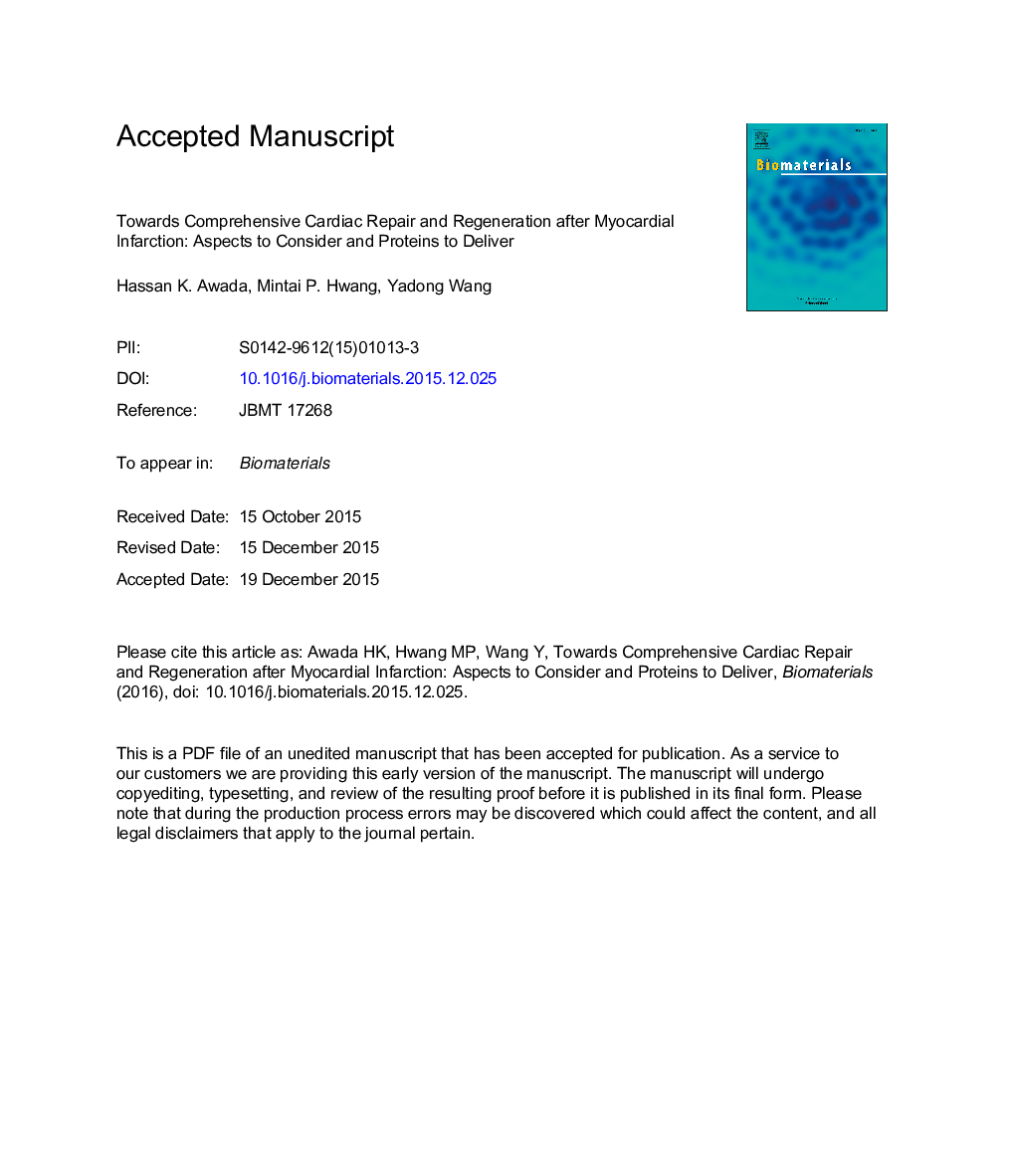| Article ID | Journal | Published Year | Pages | File Type |
|---|---|---|---|---|
| 6485172 | Biomaterials | 2016 | 76 Pages |
Abstract
Ischemic heart disease is a leading cause of death worldwide. After the onset of myocardial infarction, many pathological changes take place and progress the disease towards heart failure. Pathologies such as ischemia, inflammation, cardiomyocyte death, ventricular remodeling and dilation, and interstitial fibrosis, develop and involve the signaling of many proteins. Proteins can play important roles in limiting or countering pathological changes after infarction. However, they typically have short half-lives in vivo in their free form and can benefit from the advantages offered by controlled release systems to overcome their challenges. The controlled delivery of an optimal combination of proteins per their physiologic spatiotemporal cues to the infarcted myocardium holds great potential to repair and regenerate the heart. The effectiveness of therapeutic interventions depends on the elucidation of the molecular mechanisms of the cargo proteins and the spatiotemporal control of their release. It is likely that multiple proteins will provide a more comprehensive and functional recovery of the heart in a controlled release strategy.
Keywords
Related Topics
Physical Sciences and Engineering
Chemical Engineering
Bioengineering
Authors
Hassan K. Awada, Mintai P. Hwang, Yadong Wang,
